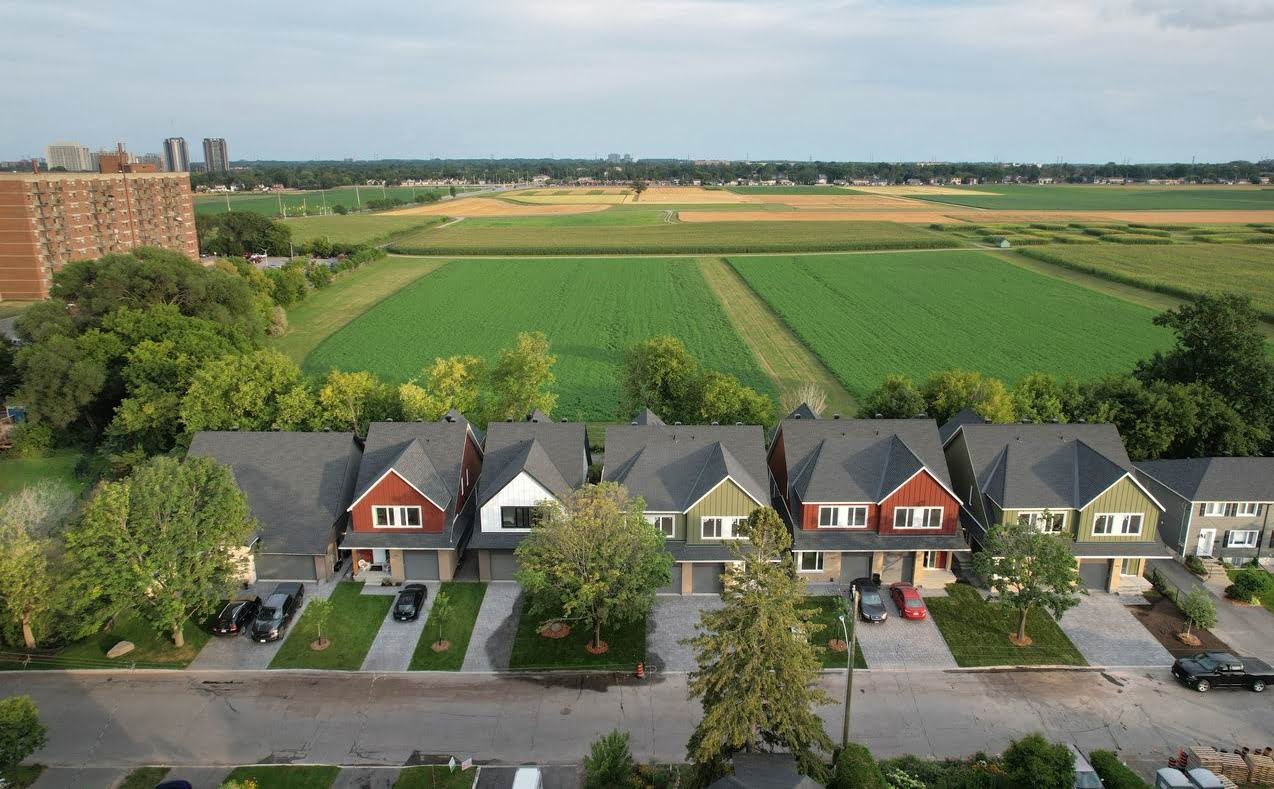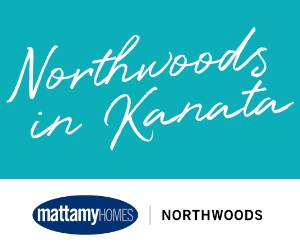Two recent developments suggest the evolution of energy-efficient home building is making strides toward the 2030 target of having all new homes built to Net Zero standards, but are we making as much progress as we need to?
The federal government, working with the provinces, has determined that building code changes to come into effect in 2030 will require new homes to be Net Zero Ready. Net Zero, put simply, is a home that produces as much energy as it consumes, in essence requiring zero energy from the provincial electrical grid. Typically, this is done through solar panels on the roof to generate the home’s own electricity.
In practice, there are times of the year in Canada when solar panels cannot create enough to power a home on demand, which means there must be storage capacity added to stockpile electricity produced until it’s needed, or there must be a give-and-take relationship with the utility that services the home to feed power back to the grid when there’s extra but then draw on the power grid when the home doesn’t produce enough, balancing out over the course of the year.
A Net Zero Ready home is one that is built to accommodate on-site energy production through a system such as solar panels (it has a beefed-up roof structure for the added weight of panels, for instance, as well as increased insulation and a tighter building envelope), but does not yet have that system installed.
While it’s becoming increasingly common to see custom homes built Net Zero, on a community level much still needs to be done.
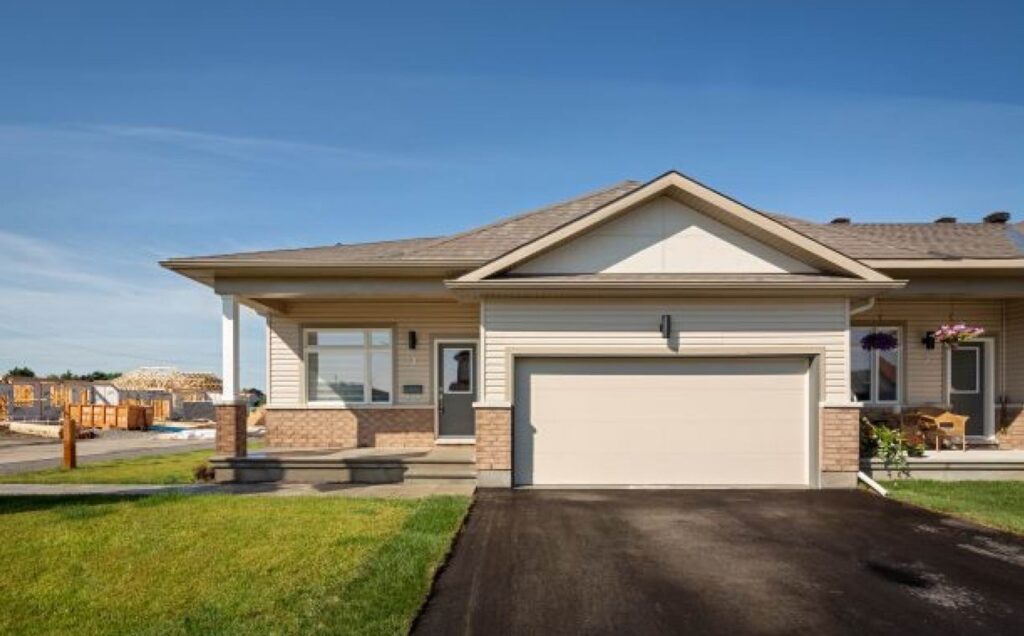
A few Ottawa production builders have tested the waters:
- Minto Communities has built four Net Zero townhomes and a single-family home at Arcadia in Kanata as part of a pilot project with Natural Resources Canada (NRCan), and two of its dream homes for the CHEO Dream of a Lifetime lottery were Net Zero, including this year’s;
- Tartan Homes built two test homes at Poole Creek in Stittsville in 2018-2019 to work out the kinks in getting Net Zero homes into its production system;
- And one of Campanale Homes’ model homes at Callahan Estates in Arnprior is a Net Zero award winner.
But most production builders have yet to make the move toward this level of energy-efficient home building.
“I am glad to see there’s a spread of builders who have done them over the past few years,” says Jason Burggraaf, who is executive director of the Greater Ottawa Home Builders’ Association. “Each house that gets done and each new builder that takes it on helps Net Zero shift to that more mass-market setup. It’s time to get out of that pilot project stage and really make it a much more common thing.”
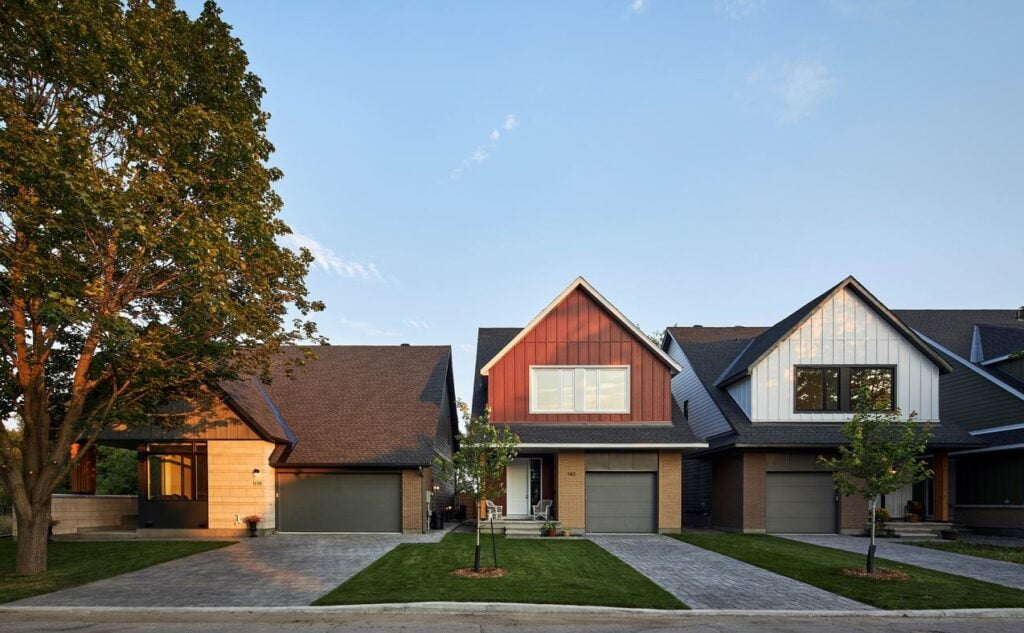
Two projects are looking to make that transition. On Sept. 1, RND Construction unveiled what it bills as Ottawa’s first Net Zero home development project, Farmside Green. Comprising nine singles and semi-detached homes that back onto the Experimental Farm in Carlington, Farmside Green is tiny as far as production developments go, but it does take that step forward from the custom home realm to the mass produced one when it comes to Net Zero homes.
“Farmside Green is the result of a thoughtful approach to location, design and building, something we need more of in Ottawa,” mayor Jim Watson said at the unveiling.
Long known as a leader and supporter of green building and renovating in Ottawa, RND owner Roy Nandram, who typically undertakes renovations and building custom homes, felt it was important to make Farmside Green Net Zero Ready.
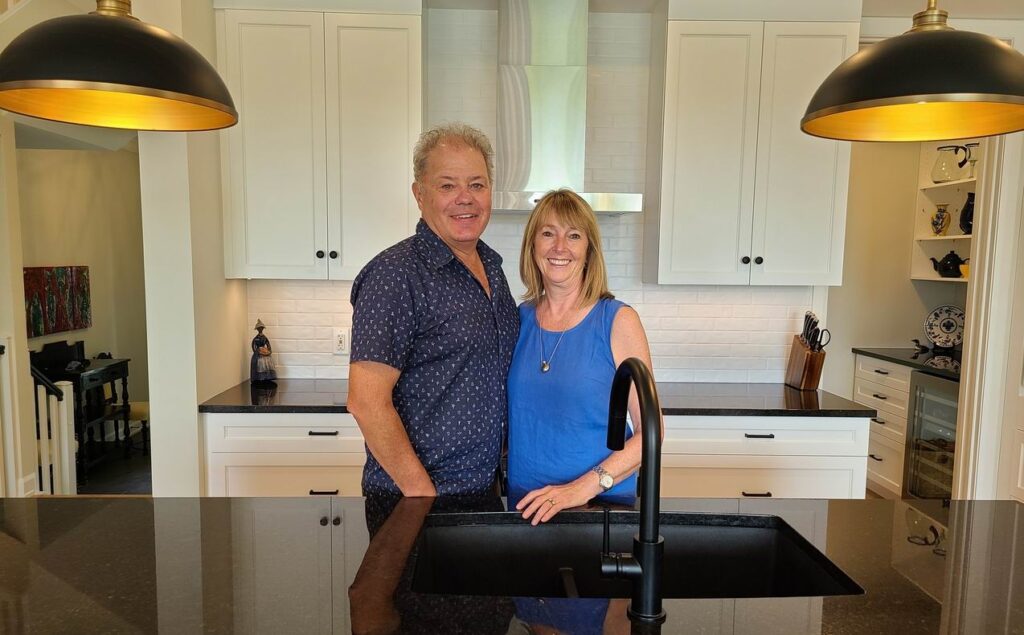
“My personal job was to educate and persuade eight of the nine owners to upgrade. The ninth was completed at RND’s cost and we are hoping that the homeowner will compensate us for this,” says Nandram. “I do not believe there is enough consumer knowledge of Net Zero.”
For buyer Barry Bickerton and his wife, Rosemary, getting that education was much appreciated.
“He’s a visionary, he’s a leader in the area,” says Barry Bickerton, a retired principal with the Ottawa Carleton District School Board. “With such deep knowledge and expertise, he’s able to explain things in a way that we could understand.” That made opting for a Net Zero Ready home “probably the easiest decision we made in terms of an option or an upgrade or a feature of the home.”
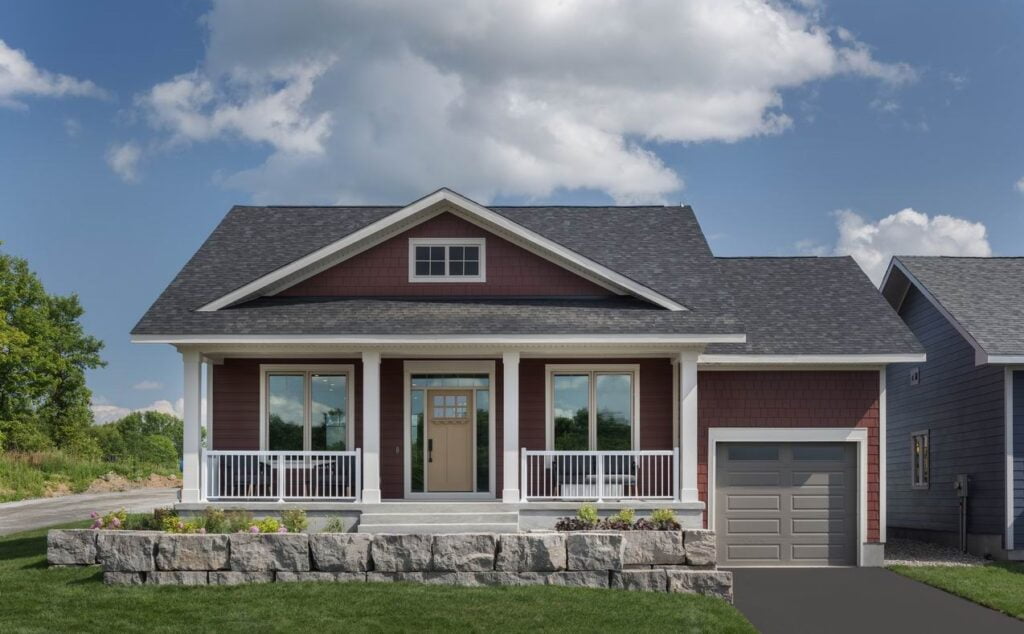
On a larger scale, in May Land Ark Homes launched a full community of Net Zero Ready homes in Westport called Watercolour. The development of about 300 bungalows and two-storey singles features a traditional neighbourhood design philosophy of being walkable, with homes closer to the street and wide porches to encourage connection. Along with being Net Zero Ready, the homes are fossil-fuel free, using air-source heat pumps for heating and air-source hot water tanks, says Land Ark founder Stephen Rolston.
“We just thought this should be standard in all of our homes,” he says. (See below for more on Watercolour.)
But despite the advancements that Farmside Green and Watercolour offer, we still have a long way to go and a relatively short time to do so. To date, 18 homes have been built to Net Zero standards in Ottawa, says Burggraaf, and many of them are custom homes. (RND is poised to add 11 more to that tally, including the nine Farmside Green homes.)
As one of Ottawa’s biggest builders and a long-time leader in building green, Minto’s experiment with Net Zero at Arcadia in 2015 and 2016 was a promising step. Minto first built a two-storey single that became one of its model homes, followed by a block of townhomes that were the first in Ontario to be built Net Zero.

They were built as part of a cross-Canada NRCan demonstration program, were monitored for their energy performance, and were meant to show the increasing affordability of Net Zero homes. Yet Minto could not get any uptake on the Net Zero offering, ultimately failing to sell any of the homes at Arcadia as Net Zero or Net Zero Ready.
“It was intriguing to people but zero people wanted to buy it,” says Brent Strachan, president of Minto Communities Ottawa. “We also had a period at Mahogany out in Manotick where we offered Net Zero Ready and partnered up with a company for panels. Zero people bought it.”
That surprises Mark Rosen of Building Energy Inc., an architect and energy adviser who has worked with builders, including Minto and Tartan, as they’ve explored energy-efficiency options. He does acknowledge though that “at the stage that they were at when those projects were built, the public did not, and still doesn’t frankly, have a very good understanding of exactly what Net Zero means.”
A step back
Aside from building two recent lottery dream homes to Net Zero standards, Minto has taken a step back from Net Zero production and is currently not offering it as an option at any of its Ottawa communities, says Strachan.
Nor has Tartan — another green building leader — been able to move forward with incorporating Net Zero into its homes, says marketing director Heidi Hayley.
More on Tartan’s Net Zero test homes:
“On a production level, offering something like a Net Zero upgrade is a very challenging thing to do, because the way that they achieve cost efficiency is by having replicable specifications,” says Rosen. “So, they want all the homes that are being built side by side to be built the same way so that there’s no trade confusion, no confusion of where products are delivered.”
NRCan spokesperson Alycia Sevigny concedes that in order to achieve industry-wide adoption, “the unique challenges of NZE (Net Zero Energy) production at the community level must be addressed.” Those challenges include:
- Availability of skill sets and high-performance equipment;
- Uncertainty surrounding the risks associated with escalating construction costs;
- Insufficient, on-site space for installing the required solar panels in high density areas and multi-unit residential buildings, meaning not all new homes will be able to reach Net Zero; and
- Inconsistent net-metering agreements with utility companies in different regions, where generating, storing and exporting electricity can be deemed as a nuisance.
Strachan feels that to get to Net Zero at the community level, “there has to be an aligned approach, starting from the city, the electrical companies — the Hydro Ones and the Hydro Ottawas, they’re a major player in this — as well as the builders (and) consumers.”
Watson says it’s important for the city to practise what it preaches, citing the new library at LeBreton Flats, which will be Net Zero. But he also acknowledges that “this is all relatively new to our society and we have to do a better job of co-ordinating all of the different cooks in the kitchen.”
Another recent announcement may be one step towards having Net Zero seen as mainstream. On Aug. 9, the city and NRCan announced a pilot program to retrofit four Ottawa Community Housing townhomes into Net Zero homes. NRCan says it’s the first project of its kind in Canada.
“Ottawa Community Housing is Ottawa’s largest landlord, and with their building stock due for renewal, they are candidates to demonstrate the Energiesprong approach — a new prefabricated construction approach developed in Holland that is less disruptive and more cost-efficient, allowing for deeper energy retrofits,” says Sevigny.
While the pace to adopt Net Zero as mainstream in production building may seem slow, strides are being made, says Rosen.
“We understand how to do it. The problem of how to build a Net Zero home is solved,” he says. But costs are still high for things like solar panels — even though they are coming down “crazy fast” — and attitudes need to change among those on the periphery of the industry such as banks, Realtors and appraisers who don’t yet give Net Zero the value it deserves.
“If they did ascribe that value to it then I think we would transition much more quickly,” Rosen says.
Understanding the value
Even among consumers, part of the challenge, says Burggraaf, is figuring out “how to get the public to appreciate the price premium of energy efficiency.” They may appreciate the cost of granite countertops, “but there’s a lot less appreciation for the energy-efficiency performance in a house… that’s the part where we really need to step up and learn how to sell.”
The steps taken by RND and Land Ark are encouraging.
“It just seems naturally the way we need to go,” says Bickerton, who moved into his new home at Farmside Green in July. “We need to be more energy efficient; we need to be more conscientious of how energy is being used.”
Burggraaf thinks we’re slowing moving that way.
“You need those early adapters to go through the growing pains and the struggles and really be the example for others,” he says. “We still need more builders to start picking up Net Zero, plugging it into their construction processes and getting it to a point where it works for them. This is not something you’re going to be able to flick the switch on in 2030 and have it work right away. There’s going to be some trial and error there so everybody really needs to start investing the time into getting it right so that when 2030 does hit and the code is in force, they’re hitting the ground running.”
More on Watercolour Westport
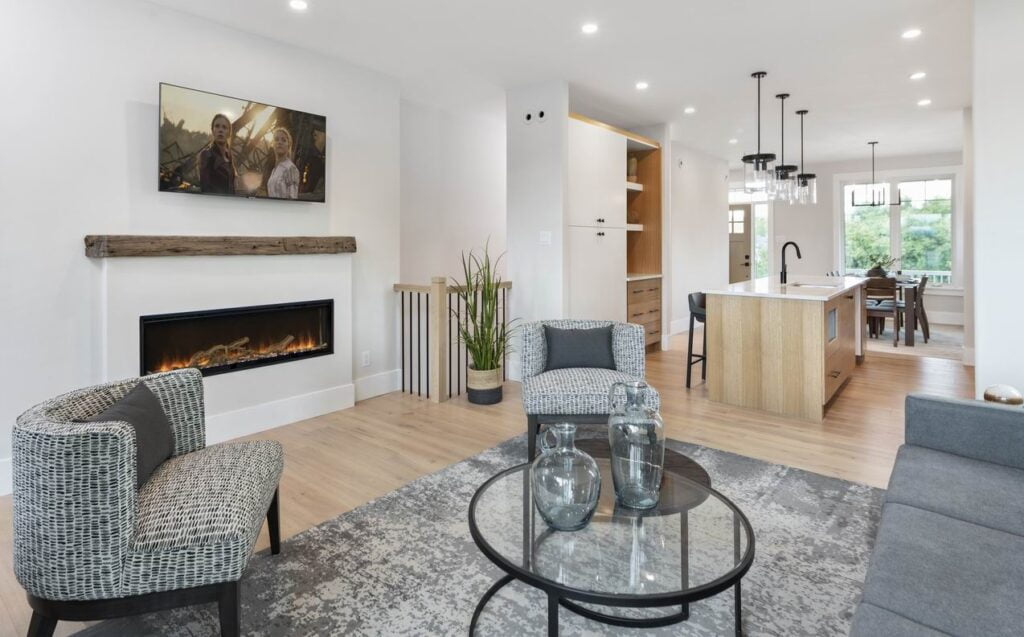
Watercolour Westport by Land Ark Homes launched in May with a mix of bungalows, bungalow lofts (Land Ark calls them bungalofts) and two-storey singles ranging from 1,200 to 2,500 square feet and starting at $699,900.
The plan is to build about 25 homes a year over the next dozen years, says Rolston. Recognizing that buyers might not have a clear understanding of what Watercolour was offering, he says the decision was made to begin construction on 12 of the homes before any sales were made.
“When you’re doing something that’s so unique and different and one-of-a-kind,” he says, “until we got paving… nobody thought this was going to take off.”
As a result, Watercolour already has a fully furnished model that buyers can walk through.
All homes are being built Net Zero Ready, which Rolston says adds about $25,000 to the cost of building the homes, before solar panels are included. Adding the panels, battery backup storage and an inverter is an extra $50,000, he says.
Rolston expects the homes to appeal to both downsizers and families looking for a home and cottage in one, with the ability to easily work from home (the community will have fibre optic servicing).
“It’s an escape from urban density for people to a slower life,” says Jake Warren, Watercolour’s marketing specialist. “There’s a holistic wonder to life in Westport that we think is really attractive.”
Westport, which is on the Rideau waterway system and is about an hour and a half southwest of downtown Ottawa, packs in a ton of amenities for a small town, offering plenty of shopping, schools, services and activities.
“There’s lots around,” says Warren. “We call it cottage-style homes and your home and cottage in one for just that reason. Nature is right on your doorstep.”
